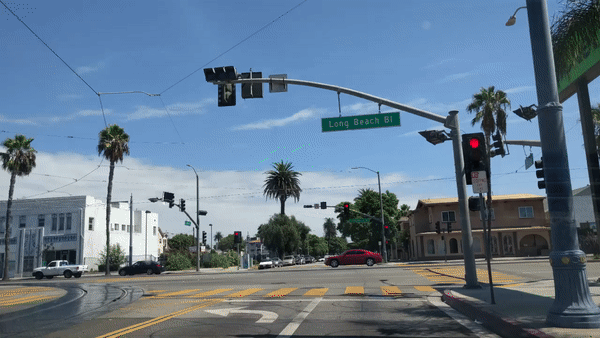New types of mobility systems, geo-targeting of customers and the emergence of more delivery services is creating demand for mapping data that is richer and more intelligent. Mapillary, a Swedish startup that applies computer vision to a growing volume of crowdsourced street-level imagery to create maps that are constantly updated and richer in detail, is aiming to provide just that.
The company counts BMW, Toyota, Volkswagen, the World Bank and Lyft among its partners and investors.

“The expectations for people using maps is very different than it was 10 years ago,” says Mapillary CEO and cofounder Jan Erik Solem.“More and more companies need maps to be competitive, some even have their own internal mapping teams. The ridesharing map is different from the delivery map which is different from the scooter map. With so many devices collecting images and sensor information maps are going to be part of the future for businesses.”
Indeed, the mapping market at is expected to grow to $8 billion by 2025. This is in part because a broad range of services are dependent on geo-spatial data.
In addition to traditional cars and self-driving vehicles, emerging urban services such as smart parking, improved traffic information, and delivery information are creating new, and more specific types of needs. For example, many business now use geo-targeting to market products and demand is growing from public agencies such as the military, police and urban planners that need to leverage better geo-location information.
To do street-level mapping tech giants such as Google and Apple send fleets of vehicles roaming the streets with cameras and sensors. It’s a costly and inefficient proposition that makes it difficult to regularly update maps, let alone guarantee widespread coverage.
That is where Mapillary comes in. Solem started the company in 2013 after Apple acquired his previous startup, Polar Rose, which made facial recognition software.
Mapillary first turned to crowdsourcing to enrich mapping data. People can download its app and then upload images from smartphone cameras or GoPros. Mapillary stitches these images together, and its computer vision system then identifies the objects in the images, such as stop signs, lane markings, traffic lights, or other landmarks.
Last September, the company announced a partnership to use Amazon Rekognition, which reads text in images, to extend its own computer vision capabilities.

The companies are using that partnership to develop a system that helps cities and drivers find available parking spots much faster. A 2017 study found that parking problems in urban areas was costing U.S. residents $73 billion annually in lost time and parking fines.
Mapillary’s platform is also being used by the Department of Transportions in five U.S. states (Utah, Connecticut, Florida, Vermont, and Arizona) to find more efficient ways to analyze road safety. The agencies have uploaded 270,000 miles of road networks to Mapillary. Those images are then automatically processed with computer vision to detect everything from traffic signs and guardrails to crosswalks and intersections. The process saves these government agencies money because it reduces the need to send crews out to inventory stretches of road, install monitoring equipment and then analyze the data on their own.
In April, the company passed the milestone of 500 million images uploaded. Mapillary’s database is being used by the Toyota Research Institute to benchmark and fine-tune its autonomous driving algorithms. And the American Red Cross is using Mapillary to gather information and images to better coordinate disaster response efforts.
To create new business opportunities Mapillary is launching a marketplace that allows businesses or organizations with specific mapping needs to post job listings and connect with the startup’s mapping community.
Customers can makes requests on the Mapillary Marketplace, including such details as location and budget. Drivers can accept a job, gather the data through the app, and are paid after they complete the job. For the moment, the service is currently only available in the U.S. and Europe but the idea is to eventually make it global. Data gathered for specific projects gets fed into the main Mapillary database to make it more robust.
“It’s about connecting the supply and demand side of the platform better,” says Solem. “We have people who have contributed to our community who work all over the world. And we have customers who need very specific mapping images and data.”
Last year, Mapillary raised a $15 million round of venture capital, bringing the total raised to $24.5 million. Solem says in the coming year the company will continue to work on developing its computer vision capabilities so it can identify even more objects while also increasing efforts to bring in new clients.






